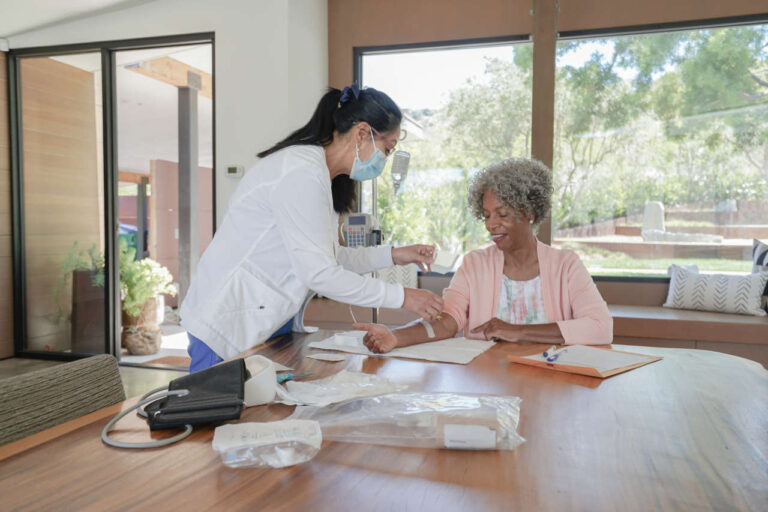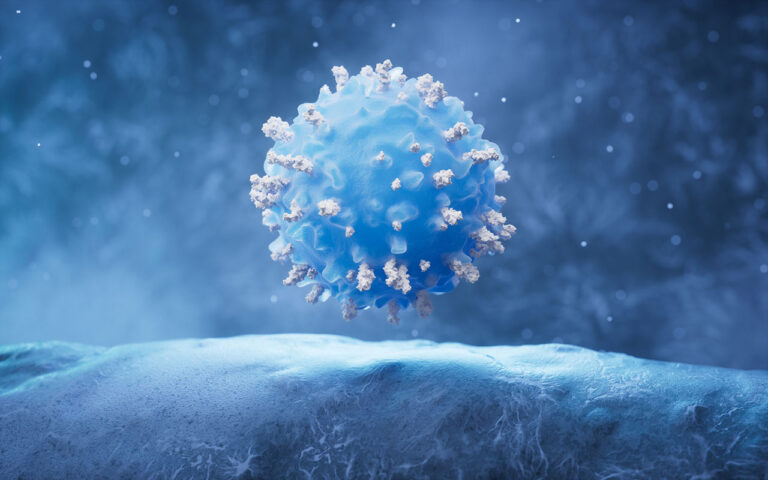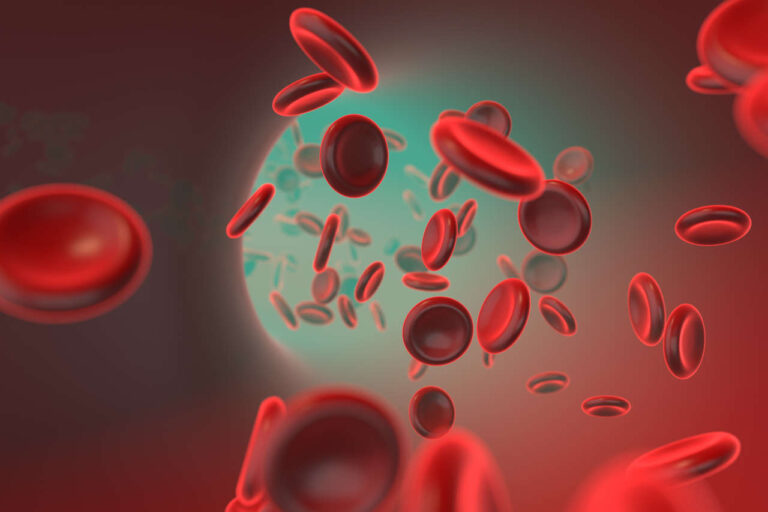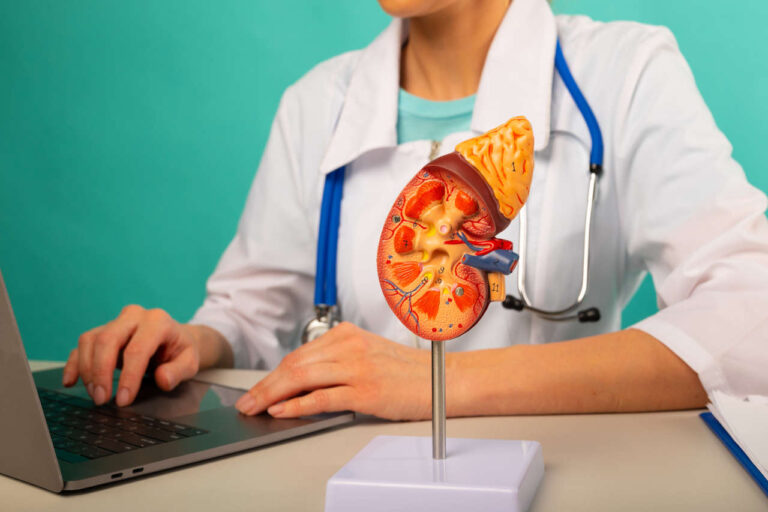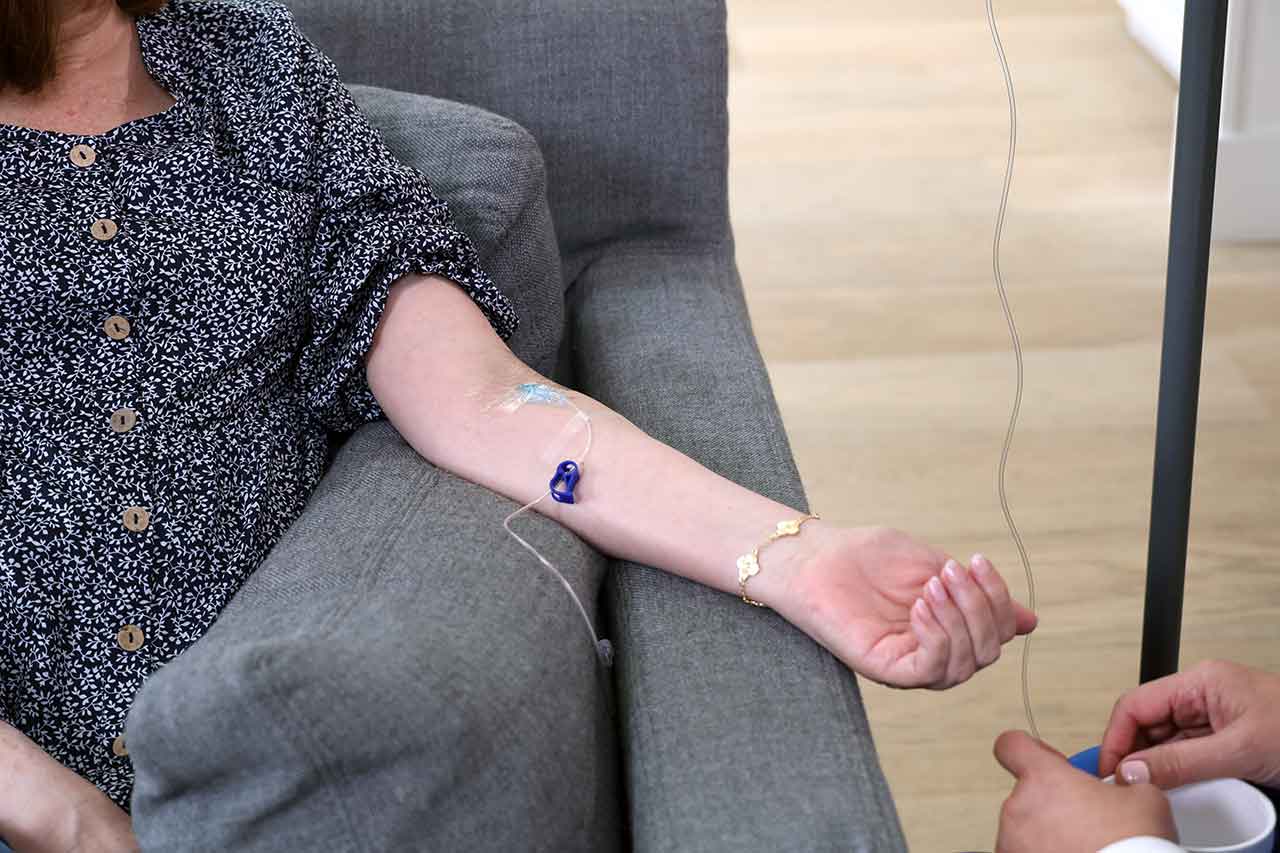
Aplasia adquirida de glóbulos rojos La aplasia pura de glóbulos rojos adquirida (APE) es un subtipo de aplasia pura de glóbulos rojos (APRC), un trastorno sanguíneo poco común en el que la médula ósea no produce suficientes glóbulos rojos (GR). Cuando una persona con este trastorno no tiene suficientes glóbulos rojos en el cuerpo, se siente fatigada, sin aliento, letárgica o débil debido a una enfermedad grave. anemia.
¿Puede ayudar la IgIV?
Información gratuita sobre el tratamiento con IgIVLa terapia con inmunoglobulina intravenosa (IVIG) ha surgió como una opción de tratamiento eficaz para la aplasia de glóbulos rojos adquirida (aPRCA), especialmente en los casos en que esta afección es desencadenada o causada por trastornos autoinmunes o infecciones virales.
Analicemos con más detalle los conceptos básicos de la aplasia adquirida de glóbulos rojos, cómo se produce y cómo Terapia con IgIV Puede ayudar a los pacientes con este raro trastorno de la médula ósea.
¿Qué es la aplasia adquirida de glóbulos rojos?
La aplasia pura de glóbulos rojos adquirida es una enfermedad sanguínea poco común que se caracteriza por una anemia grave causada por una disminución significativa de la producción de glóbulos rojos (también llamados eritrocitos) en la médula ósea. Esta disminución drástica puede deberse a una insuficiencia de la eritropoyesis.
La eritropoyesis es el proceso de producción de glóbulos rojos en la médula ósea. Cualquier problema con este proceso puede reducir la cantidad de glóbulos rojos inmaduros disponibles (también llamados... reticulocitos). Estas células se liberan desde la médula ósea al torrente sanguíneo y se convierten en glóbulos rojos maduros.
Un recuento bajo de glóbulos rojos puede provocar anemia grave, que puede causar síntomas como mareos, fatiga, dificultad para respirar, ritmo cardíaco acelerado, debilidad o piel pálida.
¿Qué causa la aplasia adquirida de glóbulos rojos?
A diferencia de aplasia de glóbulos rojos hereditaria o congénitaLa aplasia eritrocitaria pura adquirida, causada por una mutación (un error) en ciertos genes, se debe a diversos factores externos. Según los factores que intervienen en su aparición, se clasifica en aplasia eritrocitaria adquirida primaria y secundaria:
- Aplasia primaria adquirida de glóbulos rojos: Primario: la aPRCA es una enfermedad autoinmune, lo que significa que el sistema inmunitario produce proteínas, llamadas autoanticuerpos, que luego atacan a las células madre formadoras de sangre en la médula ósea.
- Aplasia de glóbulos rojos adquirida secundaria: Se cree que la aPRCA secundaria es causada por otras afecciones médicas, como tumores sólidos (timoma), enfermedades autoinmunes (como lupus eritematoso sistémico, leucemia linfocítica crónica o artritis reumatoide), infecciones (principalmente parvovirus B19) o ciertos medicamentos.
Se cree que la aPRCA primaria o secundaria se puede tratar atacando la causa subyacente (es decir, enfermedad autoinmune, cáncer o infecciones).
Cómo la terapia con IgIV puede tratar la aplasia adquirida de glóbulos rojos

En general, la terapia con IgIV proporciona un beneficio esencial. anticuerpos que ayudan a regular el sistema inmunológico, ya sea debilitando la respuesta inmune hiperactiva o aumentando la actividad del sistema inmunológico cuando sea necesario.
Para los pacientes con aPRCA, la terapia con IgIV puede ayudar a modular la respuesta inmunitaria al:
- Regulación de las células inmunes: En el caso de aPRCA causada por enfermedades autoinmunes, la terapia con IgIV disminuye la actividad de ciertas células inmunes, particularmente células T, que podría estar implicada en el ataque a los precursores de glóbulos rojos. Por lo tanto, se puede prevenir un mayor daño a la médula ósea con la ayuda del tratamiento con IgIV.
- Bloqueo de autoanticuerpos: En los trastornos autoinmunes, el sistema inmunitario produce autoanticuerpos que atacan por error a los glóbulos rojos o a sus precursores, lo que provoca un recuento bajo de glóbulos rojos. La IgIV bloquea estos autoanticuerpos uniéndose a ellos e impidiendo que destruyan los glóbulos rojos en el torrente sanguíneo o sus precursores en la médula ósea.
Obtenga asistencia para el copago de IgIV
- Fortalecimiento de la respuesta inmunitaria contra las infecciones: En algunos casos, La aplasia adquirida de glóbulos rojos es causada por una infección viral., como el parvovirus humano B19. El virus infecta las células progenitoras eritroides humanas, que son las células implicadas en el proceso de producción de glóbulos rojos. La IgIV ayuda a reforzar la respuesta inmunitaria en personas con sistemas inmunitarios debilitados al proporcionar anticuerpos esenciales. Estos anticuerpos atacan y destruyen el virus, impidiendo así que ataque a las células progenitoras eritroides. De hecho, una estudio de investigación Un estudio con 133 pacientes con PRCA por VPH-B19 mostró que el 93% de los pacientes experimentó una mejora en sus niveles de hemoglobina tras el primer ciclo de IgIV. Este estudio también sugiere que la terapia con IgIV es eficaz en el tratamiento de la PRCA por VPH-B19 en pacientes inmunodeprimidos.
- Ejerciendo efectos antiinflamatorios: Durante una respuesta inmunitaria hiperactiva, puede producirse inflamación en la médula ósea, lo que puede afectar la producción de glóbulos rojos. Dado que la IgIV tiene propiedades antiinflamatorias, ayuda a reducir la inflamación en la médula ósea, creando un entorno más favorable para la producción de glóbulos rojos.
¿Cuál es la dosis estándar de IgIV para la aplasia de glóbulos rojos adquirida?
La dosis de IgIV puede variar considerablemente entre personas. Generalmente, se basa en el tipo de afección subyacente que causa la aPRCA. Por ejemplo, varios estudios de caso sugirieron que... dosis alta de IgIV (2 g/kg), generalmente dividida en 5 días (400 mg/kg/día), es más eficaz en el tratamiento de la PRCA asociada con la infección por parvovirus B19 en pacientes inmunodeprimidos.
Sin embargo, para las personas que experimentan una recaída (anemia grave) después de 3 meses, se recomienda una dosis de mantenimiento de 1 g/kg de IgIV durante 2 días.
Es importante consultar a su proveedor de atención médica para comprender su período de tratamiento con IgIV y la frecuencia de las dosis.
¿Cómo beneficia la IgIV a los pacientes con aplasia de glóbulos rojos adquirida?
La terapia con IgIV ofrece varios beneficios potenciales para aquellos con aplasia de glóbulos rojos adquirida:
- La IgIV modula rápidamente el sistema inmunológico, lo que la convierte en una opción valiosa para los pacientes que necesitan tratamiento inmediato.
- La IgIV es un tratamiento no invasivo que tiene menos riesgos en comparación con el trasplante de médula ósea.
- La IgIV es una terapia versátil gracias a sus múltiples mecanismos de acción. En pacientes con aPRCA, puede tratar tanto las causas autoinmunes como las infecciosas asociadas con esta afección.
Consulte a un especialista en IgIV
Qué esperar durante el tratamiento con IgIV
El tratamiento con IgIV se administra mediante una infusión lenta en las venas (vía intravenosa o IV). Mientras recibe el tratamiento con IgIV, es posible que experimente algunos síntomas leves. efectos secundarios Como dolor de cabeza, náuseas, fiebre baja o dolor muscular o articular. Dependiendo de su situación, podría recibir IgIV en un centro de atención médica (por ejemplo, un centro de infusión o el consultorio de un profesional de la salud) o en su domicilio.
Conclusión
La terapia con IgIV parece ser una opción eficaz para tratar la aPRCA, especialmente en casos donde la causa es una infección viral o una enfermedad autoinmune. Sin embargo, la terapia con IgIV puede causar algunos efectos secundarios leves que deben considerarse antes de iniciar el tratamiento. Su profesional de la salud puede analizar los riesgos y beneficios del uso de IgIV para tratar la aPRCA según su situación clínica.
REFERENCIAS:
- Lobbes, H., Lega, C., Guenno, GL, Ruivard, M. y Mainbourg, S. (2023). Estrategia de tratamiento para la aplasia pura de glóbulos rojos adquirida: Revisión sistemática y metanálisis. Avances en la sangre, 7(21), 6451. https://doi.org/10.1182/bloodadvances.2023010587
- Gurnari, C., y Maciejewski, JP (2021). Cómo manejo la aplasia pura de glóbulos rojos adquirida en adultos. Sangre, 137(15), 2001-2009. https://doi.org/10.1182/blood.2021010898
- Aplasia pura de glóbulos rojos, adquirida(7 de agosto de 2007). Organización Nacional de Enfermedades Raras (NORD). https://rarediseases.org/rare-diseases/pure-red-cell-aplasia-acquired/
- Nakazawa, H., Sakai, K., Ohta, A., Fujishima, N., Matsuda, A., Hosokawa, K., Nakamura, F., Nakao, S., Mitani, K. y Ishida, F. (2022). Incidencia de la aplasia pura de glóbulos rojos adquirida: Un análisis epidemiológico a nivel nacional con dos bases de datos de registros en Japón. Avances en la sangre, 6(24), 6282. https://doi.org/10.1182/bloodadvances.2021006486
- Sherratt-Mayhew, S., y Nicolson, P. (2024). Uso de inmunoglobulina intravenosa para el tratamiento de la aplasia pura de glóbulos rojos inducida por inhibidores de puntos de control inmunitario, resistente a esteroides. Reporte de un caso. Medicina Clínica, 24, 100047. https://doi.org/10.1016/j.clinme.2024.100047
- Crabol, Y., Terrier, B., Rozenberg, F., Pestre, V., Legendre, C., Hermine, O., Guillevin, L., Mouthon, L., Loïc, G., Annette, B., Alain, F., Bertrand, F., Bertrand, G., Amélie, L., Isabelle, L., Catherine, M., Luc, M., Eric, O., Nathalie, P., . . . Amina, B. (2013). Terapia de inmunoglobulina intravenosa para la aplasia pura de glóbulos rojos relacionada con la infección por parvovirus humano B19: Un estudio retrospectivo de 10 pacientes y revisión de la literatura. Enfermedades infecciosas clínicas, 56(7), 968-977. https://doi.org/10.1093/cid/cis1046
- Lobbes, H., Lega, J., Guenno, GL, Ruivard, M. y Mainbourg, S. (2023). Estrategia de tratamiento para la aplasia pura de glóbulos rojos adquirida: una revisión sistemática y un metanálisis. Avances en la sangre, 7(21), 6451–6465. https://doi.org/10.1182/bloodadvances.2023010587
- Medias, RT (2016). Aplasia pura de glóbulos rojos. Sangre, 128(21), 2504–2509. https://doi.org/10.1182/blood-2016-05-717140
- Balasubramanian, SK, Sadaps, M., Thota, S., Aly, M., Przychodzen, BP, Hirsch, CM, Visconte, V., Radivoyevitch, T. y Maciejewski, JP (2017). Enfoque de manejo racional para la aplasia pura de glóbulos rojos. Hematológica, 103(2), 221–230. https://doi.org/10.3324/haematol.2017.175810

